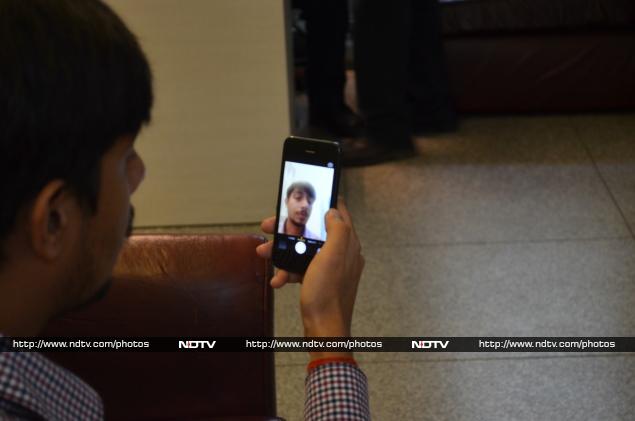- Home
- Cameras
- Cameras News
- New photographic forensics help identify faces from reflections in eyes
New photographic forensics help identify faces from reflections in eyes

Scientists have developed a new technique which can recover the faces of bystanders from reflections in the eyes of photographic subjects, a development that could help identify criminals.
As the most commonly photographed objects are faces, there is potential in mining detailed facial images for hidden information, researchers said.
Until now, photographers might reasonably have assumed that their own face was absent from the image. But research, led by Dr Rob Jenkins from University of York overturns this assumption.
By zooming in on high-resolution passport-style photographs, Jenkins and co-researcher, Christie Kerr from the University of Glasgow were able to recover the faces of bystanders from reflections in the eyes of photographic subjects.
The recovered bystander images could be identified accurately by observers, despite their low resolution.
To establish whether these bystanders could be identified from the reflection images, the researchers presented them as stimuli in a face-matching task.
Observers who were unfamiliar with the bystanders' faces performed at 71 percent accuracy while participants who were familiar with the faces performed at 84 percent accuracy.
In a test of spontaneous recognition, observers could reliably name a familiar face from an eye reflection image.
"The pupil of the eye is like a black mirror. To enhance the image, you have to zoom in and adjust the contrast. A face image that is recovered from a reflection in the subject's eye is about 30,000 times smaller than the subject's face. Our findings thus highlight the remarkable robustness of human face recognition, as well as the untapped potential of high-resolution photography," Jenkins said.
The researchers say that in crimes in which the victims are photographed, such as hostage taking or child sex abuse, reflections in the eyes of the photographic subject could help to identify perpetrators.
Images of people retrieved from cameras seized as evidence during criminal investigations may be used to piece together networks of associates or to link individuals to particular locations.
The study was published in the journal PLOS ONE.
For the latest tech news and reviews, follow Gadgets 360 on X, Facebook, WhatsApp, Threads and Google News. For the latest videos on gadgets and tech, subscribe to our YouTube channel. If you want to know everything about top influencers, follow our in-house Who'sThat360 on Instagram and YouTube.
Related Stories
- Samsung Galaxy Unpacked 2025
- ChatGPT
- Redmi Note 14 Pro+
- iPhone 16
- Apple Vision Pro
- Oneplus 12
- OnePlus Nord CE 3 Lite 5G
- iPhone 13
- Xiaomi 14 Pro
- Oppo Find N3
- Tecno Spark Go (2023)
- Realme V30
- Best Phones Under 25000
- Samsung Galaxy S24 Series
- Cryptocurrency
- iQoo 12
- Samsung Galaxy S24 Ultra
- Giottus
- Samsung Galaxy Z Flip 5
- Apple 'Scary Fast'
- Housefull 5
- GoPro Hero 12 Black Review
- Invincible Season 2
- JioGlass
- HD Ready TV
- Laptop Under 50000
- Smartwatch Under 10000
- Latest Mobile Phones
- Compare Phones
- Vivo Y300i
- Realme 14 5G
- Poco F7 Ultra
- Poco F7 Pro
- Samsung Galaxy M05
- Vivo Y39 5G
- Samsung Galaxy M06 5G
- Samsung Galaxy M16 5G
- Acer TravelLite (2025)
- Asus Zenbook 14 (2025)
- Honor Pad X9a
- Lenovo Idea Tab Pro
- boAt Storm Infinity
- Itel Unicorn Max
- Haier M95E
- Sony 65 Inches Ultra HD (4K) LED Smart TV (KD-65X74L)
- Sony PlayStation 5 Pro
- Sony PlayStation 5 Slim Digital Edition
- Blue Star 1.5 Ton 3 Star Inverter Split AC (IC318DNUHC)
- Blue Star 1.5 Ton 3 Star Inverter Split AC (IA318VKU)

















